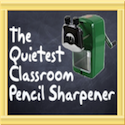If you've been following me on social media, you've probably seen that I am completely and utterly obsessed with Pixel Art activities at the moment. I used these activities with students in grades 3-5 in the past and they ATE THEM UP! I even had one 5th grader who loved them so much she taught herself how to code a simple one over winter break. She was so proud of herself and I was too! <3
With everything moving digital I wanted to find a way to use them with younger students as well as older students. I've even started creating Pixel Magic activities to go along with picture and chapter books and I've been having way too much fun with it! I can't wait to get back to school next year and use these with students...and the great thing is, no matter what our school situation looks like - back in the classroom or remote learning - these will be easy to use with students!
If you are not familiar with Pixel Art, it uses Google Sheets to "bring in" squares of color a few at a time as students enter correct answers until finally an entire picture is revealed. One of my favorite things about Pixel Art is that it is an independent and self-checking activity. Since the bits of color appear when correct answers are entered, students will know if they entered an incorrect answer since nothing new will appear. They will then know to try again!
Here take a look:
Students will need access to Google Sheets (or Microsoft Excel) to do these activities. If you're a Google school, the activities are super easy to share through Google Classroom. If your students don't have access to Google Classroom and don't have their own Google accounts, you can use them as centers in your classroom on your own or a class Google account that you create. The activities can also be download from Google Sheets as Excel files to share with your students that way, if preferred.
It's important to know that when entering the answers into the sheet, answers DO need to be spelled correctly. The answers are not case-sensitive, but spelling matters. That can be difficult for the younger learners especially, so I'm going to share an app that I've used for years in my classroom for this.
Easy Spelling Aid is an app that is available on both The App Store and Google Play. It is $4.99 in the app store on my ipad right now and honestly it was the best five bucks I've ever spent on my classroom. I've used it for years for writing workshop. You know how you have those students who are perfectionists and want every single word spelled correctly? I would have this on my tablets as an option during the revising stage. It's SO easy to use - students simply tap the microphone, say the word, and it repeats the word and displays the spelling. There are a lot of other features to this app that are helpful for dyslexic students, also.
Take a look at the intuitive design of how it works as a spelling aid.
With my Pixel Magic Book sets, I have made them available in GROWING bundles, which means after purchasing, you will receive ALL future book activities added for FREE. I only promised 12 picture book activities and that bundle is already up to 40!
By purchasing the complete GROWING bundles you also get the deepest discount (50% off) at only $1 per activity.
You can click on this image to see the description which includes all current titles included:
I also have a complete GROWING bundle for a chapter book set.
Since the picture book set has grown so large, I've also divided it up into MINI bundles of 10 books each. By purchasing the mini bundles, you receive a 25% discount ($1.50/each activity)
And, of course I still have Pixel Magic activities that are separate from books. My Yearlong Research Bundle (grades 3-5) includes one activity per month that has students visit and read/research from a website to find answers to questions on a seasonal topic.
And my Primary Pixel Magic bundle has 3 versions for each image - basic addition, basic subtraction, and word riddles - no research required!
If you're new to pixel art and would like to try one of my resources for FREE, check out the versions below.
I hope this is a new digital activity that you and your students will LOVE!


































